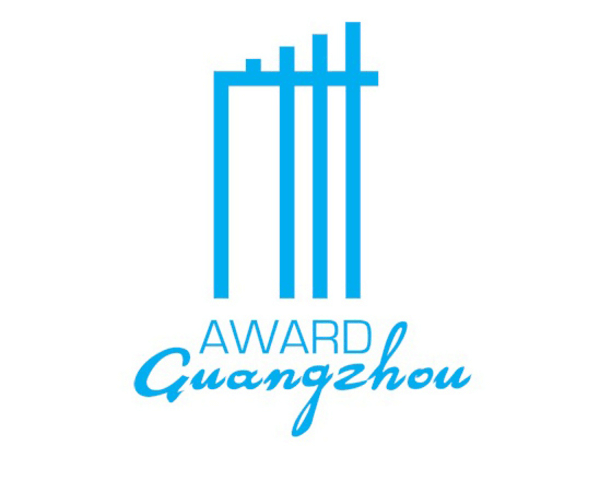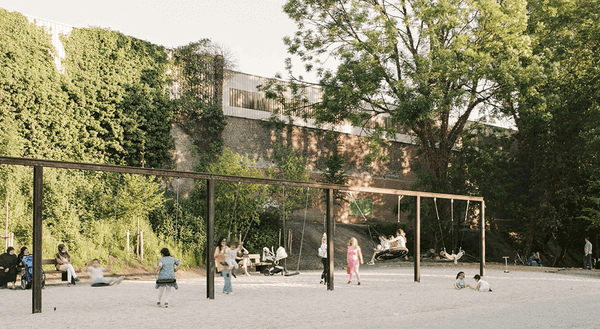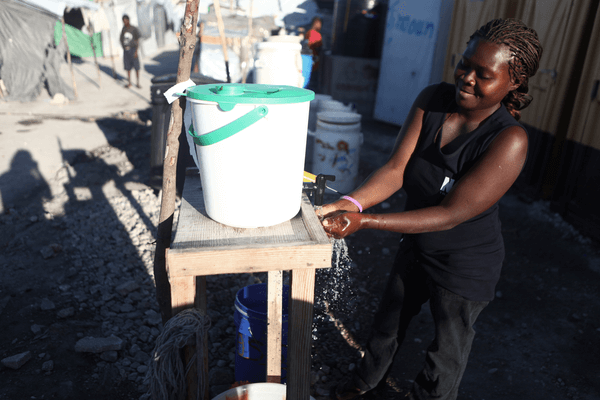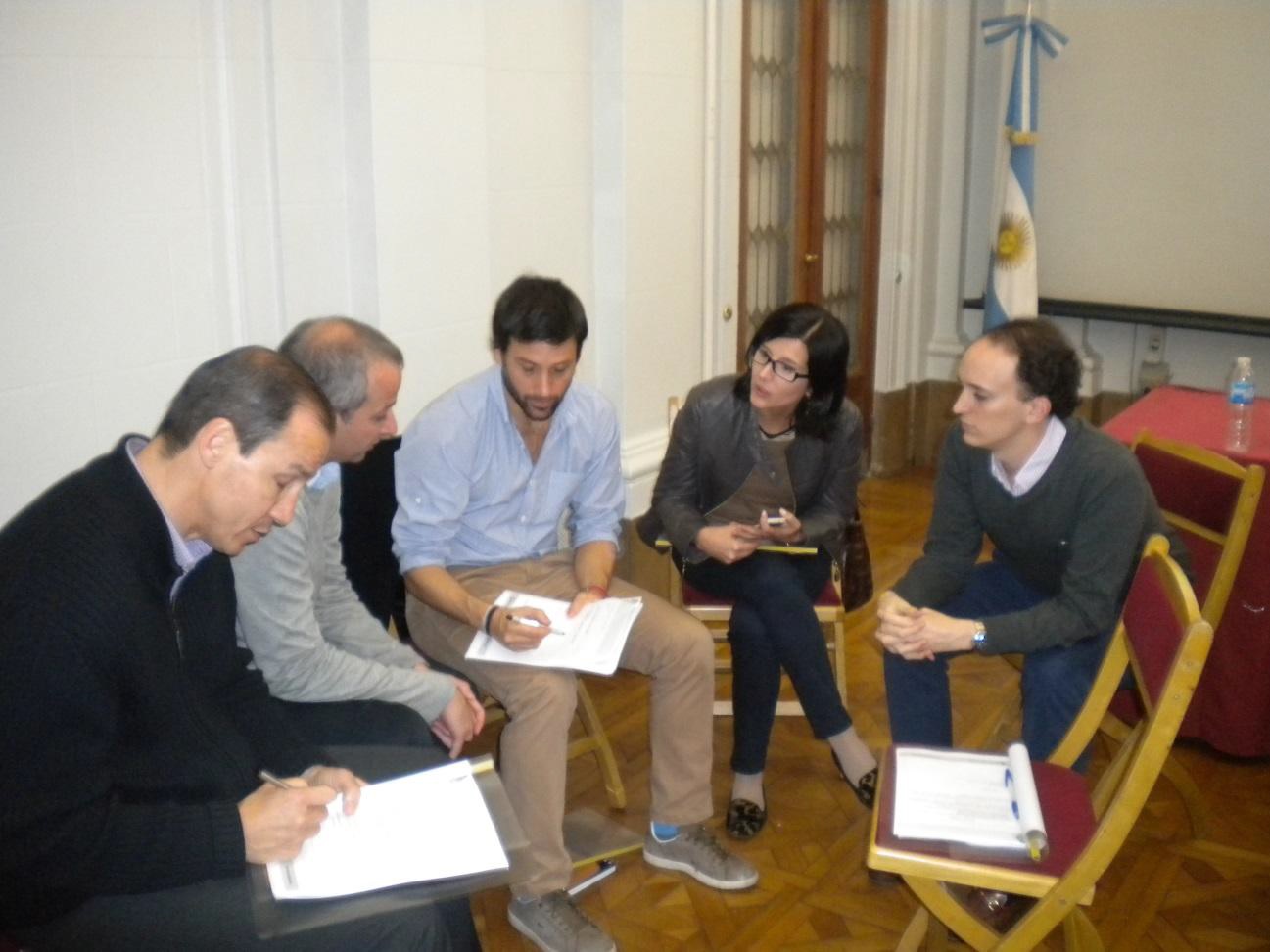 Collaborative Roundtable for Innovation and Creativity - © City of Buenos Aires
Collaborative Roundtable for Innovation and Creativity - © City of Buenos Aires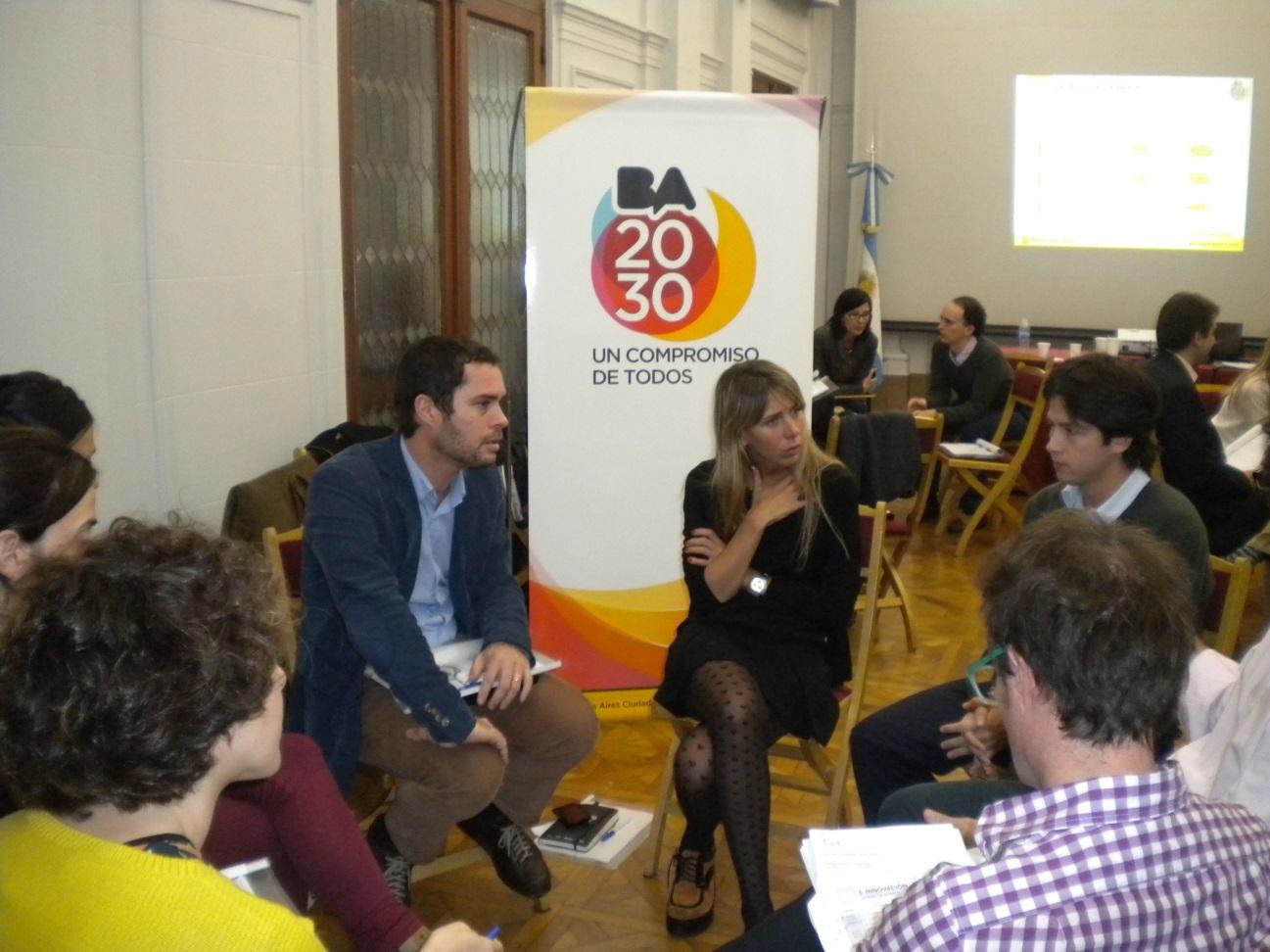 Collaborative Roundtable for Innovation and Creativity - © City of Buenos Aires
Collaborative Roundtable for Innovation and Creativity - © City of Buenos Aires Collaborative Roundtable for Innovation and Creativity - © City of Buenos Aires
Collaborative Roundtable for Innovation and Creativity - © City of Buenos Aires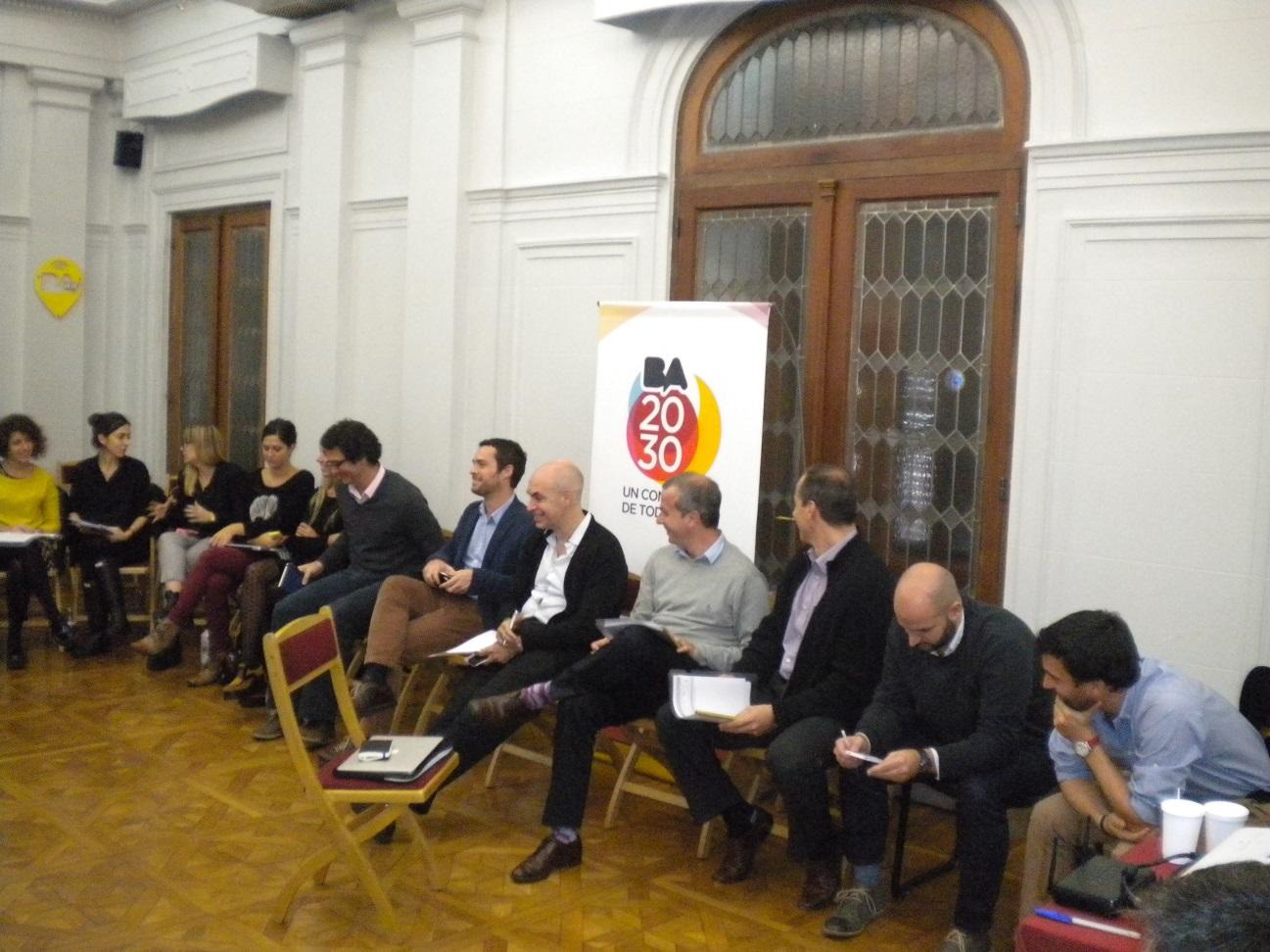 Collaborative Roundtable for Innovation and Creativity - Meeting with the Chief of Cabinet - © City of Buenos Aires
Collaborative Roundtable for Innovation and Creativity - Meeting with the Chief of Cabinet - © City of Buenos Aires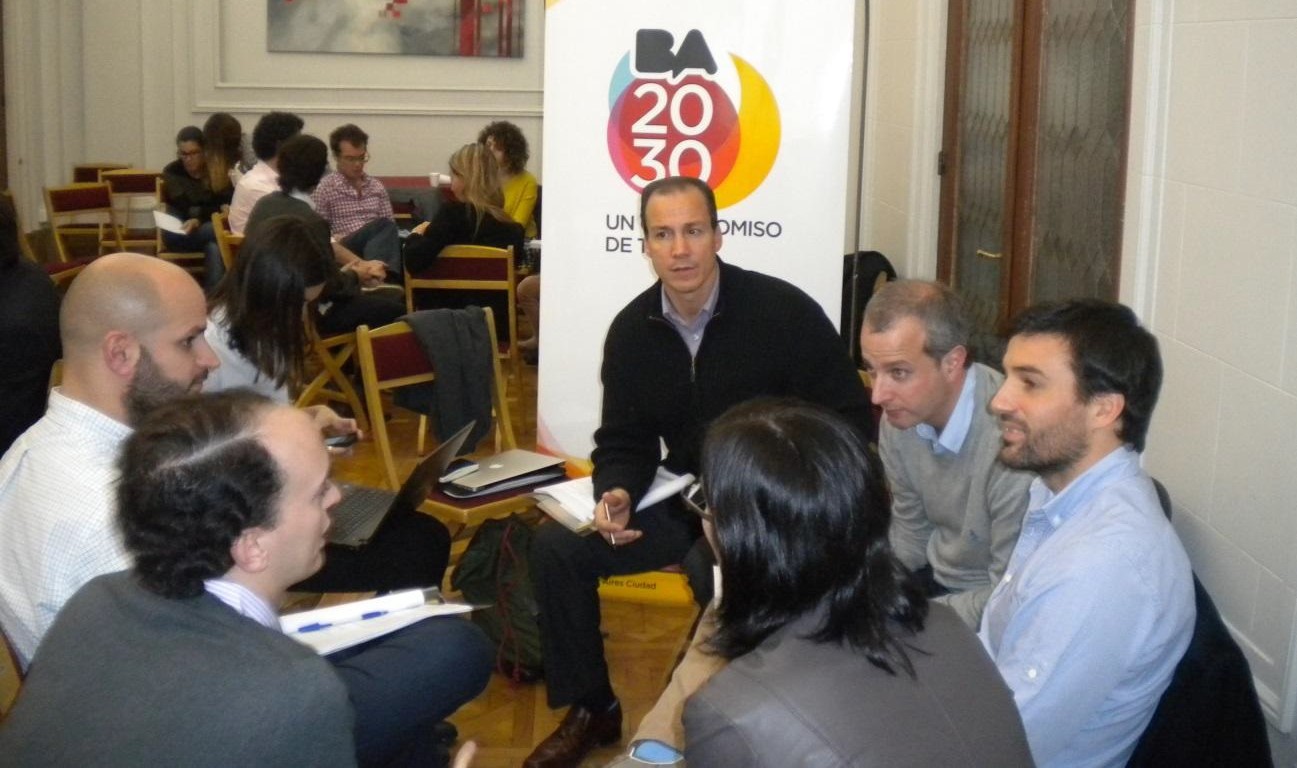 Buenos Aires City’s Collaborative Roundtable for Innovation and Creativity, Buenos Aires (Ciudad), Argentina - © City of Buenos Aires
Buenos Aires City’s Collaborative Roundtable for Innovation and Creativity, Buenos Aires (Ciudad), Argentina - © City of Buenos Aires Collaborative Roundtable for Innovation and Creativity - Meeting with the Chief of Cabinet - © City of Buenos Aires
Collaborative Roundtable for Innovation and Creativity - Meeting with the Chief of Cabinet - © City of Buenos Aires
City
Buenos Aires
Main actors
City Government, Community / Citizen Group
Project area
Whole City/Administrative Region
Duration
Ongoing since 2013
The central idea of these roundtables is to engage a frank dialogue between the municipality and its citizens and to stimulate imaginative and innovative actions by senior officials.
Like many local government administrations Buenos Aires face a wide range of bureaucratic barriers. Buenos Aires decided to reform its governance system with a management initiative called “Collaborative Roundtables for Innovation and Creativity” which emerged in 2013, as an answer to the challenge of transforming creativity, modernization and innovation in a government’s management axis, in order to mobilize it to reach and benefit people.
The varied projects which came out of the initiative include “Schools of the Future” focused on robotics and 3D printers; an “Enterprise Academy” to deepen entrepreneurial potential; a “WiFi for Inclusion” initiative to close the technology gap for less affluent citizens; and a platform to unlock the potentials of foreign market enterprises.
Guangzhou Award
This project was shortlisted for the 'Guangzhou Award' in 2014.
The Roundtables' idea came up to respond to the lack of coordination of public policies on innovation and intended, from the beginning, to break the logic of compartmentalized structures. This enables an open dialogue between senior officials, allowing them to think beyond their daily tasks, to make room for innovation and think of topics "outside" their areas, forcing them to adopt a creative spirit.
The Roundtables main goals are:
- To make innovation an economic engine,
- To articulate advances in innovation with social impact,
- To ensure that innovation and creativity become a primary concern of the government and increase participation commitment among senior representatives,
- To ensure that innovation and creativity become a priority axe in terms of communication,
- To position the City of Buenos Aires as a leader in innovation at a regional and global level.
Since the main challenge of the Roundtable is to transform the quality of life of citizens based on innovation, the team has set out five areas of intervention:
- Educating for the 21st Century
- Entrepreneur and Creative Ecosystem
- Innovating for Inclusion
- Intelligent City
- International Positioning
In order to be adopted, an initiative proposed by a General Direction must:
- Demonstrate effectiveness: The assistance of the General Direction of Planning and Management Control ensures that the initiative has an approved budget, clear goals/objectives, scheduling/GANTT, available equipment and feasibility in legal and administrative terms.
- Display the initiative and submit it for discussion at internal meetings - under the assistance of the Coordination of the Innovation and Creativity Roundtable.
- Convene a meeting of collaborative work with the actors interested in participating, and consolidate a common agenda - under the assistance of the Coordination of the Roundtable.
- Confirm the initiative and procedures with specialists of the area involved - under the attendance of the Coordination of the Roundtable.
- Ensure that the initiative has enough scope/impact - with the support of the General Direction of Planning and Management Control.
- Ensure that the initiative has enough potential in terms of communication - under the assistance of the Coordination of Communication of the Under secretariat of Creative Economy.
Above all, the Roundtable was created because the Government of the City of Buenos Aires is working towards becoming an innovative, entrepreneurial, creative, sustainable and inclusive city. So the Roundtable works on initiatives strengthening collaboration and impact. The following list summarizes some of them:
- "Significant Learning": Program that leads to entrepreneurship learning, which means converting entrepreneurship into a mandatory project to be taught in every public school in the city.
- "Program Your Future": This initiative seeks to create an ecosystem of developers through the "CodeAcademy" license, available to informatics students, students in general and in free access for all residents.
- "Accelerators and Seed Capital Fund Program": It promotes the creation of organizations that provide funding, working spaces and mentoring to some selected enterprises in order to accelerate their growth.
- "Creative Territory": The project aims to leverage the existence of physical spaces that promote collaborative work and provide the community with the necessary tools for the development of their professional projects, such as prototyping machines, office spaces and internet. The granting of soft loans by the City Bank, financing of the work or the operating costs and the State concessions are some of the alternatives in which the Government is working to encourage the creation of new spaces.
- "BA ID": It is a single digital identity for each citizen in the digital assets of the city.
- "City of Ideas": Tendering platform where every citizen can voluntarily translate their ideas on how to solve different issues.
- "En Todo Estás Vos Card": Integrative tool for new trade benefits, subsidies, access to cultural offerings and simplification of procedures.
- "Eco Bici": automatic withdrawal and return of bikes with 200 stations accessible through a mobile application and / or using the "En Todo Estás Vos" card.
Initiatives arising from the Roundtable are executed by each of the Ministries, and resources needed for their realization come from the budget allocation established in the budget law enacted by the Legislature. Meanwhile, the Roundtable participants contribute with their time and specific technical and political knowledge.
As seen below, the Roundtable has a specific stage which requires those who submit new initiatives to introduce indicators to measure impacts. Under the support of the General Direction of Planning and Management Control, it ensures that each initiative has enough scope/impact to be measured with the corresponding impact indicators.
Meanwhile, the Roundtable measures the impact of its own work through indicators developped for this purpose, such as the Ministerial participation by initiative Index, the Level of compliance with the steps to present a new initiative or finally, the Level of communication of Innovation. The latter is verifiable, for example, through the effective number of mentions of the issues which are part of the Roundtables agenda, in speeches and /or public appearances of the Mayor, the Chief of Cabinet and Ministers.
Main achievements of the Roundtable include:
1. Cycle of Meetings with referents and specialists in the field, and visits to places and institutions that stand as examples of the sector. The Cycle is directed and designed exclusively for the Mayor, the Chief of Cabinet and senior officials of the Government of the City of Buenos Aires. They are successful as they nourish many senior officials with innovative subjects, while they are inspired by the innovative locations they visit.
2. Newsletter submitted to the Mayor, the Chief of Cabinet and senior officials of the City Government. The Newsletter is beneficial not only because it includes local and international news on innovation but also because in this way it nourishes the speech of officials who receive it.
3. Monthly meetings with the Mayor, the Chief of Cabinet and senior officials of the City Government. Results from these meetings are very favorable because, considering that the Roundtable is not institutionalized; they serve as replacement of the meetings that the Chief of Cabinet holds monthly with each Ministry.
4. Strong articulation with the government communication team turning Innovation in one of the four pillars of government communications.
In order to position the city abroad, the Roundtable coordinates various initiatives such as the relations with international press, or contact with international experts in Innovation, in order to communicate them the ongoing transformations.
The space of the weekly internal meetings of the Roundtable became increasingly crowded. Consequently, it became difficult to organize a work focused on outcomes and outputs. The Roundtable was able to secure the divergence of ideas (brainstorming) but could not ensure convergence, selecting the right solution and therefore plan its implementation and management.
To respond this issue, the Governments Laboratory, which is a management initiative coordinated by the General Direction of Information and Open Government, presented the Roundtable a Proposal of Work Integration and Methodology in three formats:
1. Basic Acceleration of Projects: acceleration of initiatives from the Roundtable that need to move from being an innovative idea to becoming a project in execution.
2. Treatment of parallel themes: works on issues where innovation plays a fundamental role, but do not fall within the usual working axes of the Roundtable. The purpose of these meetings, to be attended by experts and officials concerning the related area, is to put together short reports that relieve diagnosis and transmit public policies recommendations.
3. "Workshops" by axes: meetings that serve to finish consolidating and give coherence to the work plans by axes.
The proposal presented by the Governments Laboratory created the necessary instances to develop convergent thinking. These meetings with smaller working groups that revolve around specific topics and have specific methodologies have led to the emergence of clearer outcomes.
The Innovation Roundtable is a cross-cutting space that enriches public debate with new ideas, accelerates their development and works collaboratively on innovative projects of public policy.
The initiative represents a novel strategy for dealing with public policy. The Innovation Roundtable is transverse, not responding to any governing body, and therefore its working methods, as well as its products are innovative. In addition, officials are, considering their high seniority, the ones who provide experience to the Roundtable. Notably, in order to develop, innovation requires bold and counter-intuitive attitudes, and that is precisely its main strength.
The Roundtable in partnership with the Programme of Cooperation of Innovative Public Policies of the Ministry of Government, organized a "Seminar on Innovation in the city of Rio Cuarto, Cordoba Province." The event seeked to share the public management initiatives of the City of Buenos Aires that were successful, in order to exchange experiences with the various jurisdictions of the country, and implement technical cooperation tools.
- Buenos Aires, Argentina: Buenos Aires City’s Collaborative Roundtable for Innovation and Creativity, Guangzhou Award for Urban Innovation, http://cms.guangzhouaward.org/template/view/id/2211/type/content/template_id/87.html (accessed 25 May 2016).
- Buenos Aires City’s Collaborative Roundtables for Innovation and Creativity, Urban innovation database, http://www.urban-innovations.org/index.php/Buenos_Aires_City%E2%80%99s_Collaborative_Roundtables_for_Innovation_and_Creativity (accessed 25 May 2016).
Categories
External links / documents
On Map
The Map will be displayed after accepting cookie policy
